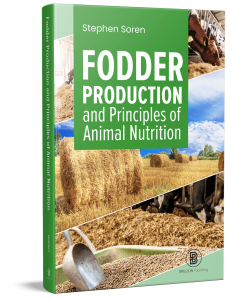The Veterinary Council of India has recently introduced the Minimum Standards of Veterinary Education Regulations, which will come into effect in 2024. These regulations aim to strengthen the quality of veterinary education and training in India. As part of these regulations, the animal nutrition course has been divided into four parts – ANN-111 in the first semester, ANN-121 in the second semester, ANN-211 in the third semester, and ANN-421 in the eighth semester. This division allows for a comprehensive understanding of the subject throughout the duration of the bachelor’s program.
The course “Fodder Production and Principles of Animal Nutrition” has been specifically designed for first-year B.V.Sc&A.H students, with a credit hour of 2+1. It is a comprehensive course that covers all the necessary materials related to animal nutrition in a concise and organized format. This newly introduced first-semester course, ANN-111, aims to provide a strong foundation for students as they delve into this crucial aspect of veterinary science. The course textbook is carefully crafted to meet all learning needs
and serves as an essential resource for aspiring veterinarians. Written in easy language and presented in a concise form, this book will greatly aid students in their understanding of key concepts related to animal nutrition.
History of Animal Nutrition
Nutritional Terms and their Denitions
Importance of Nutrients in Animal Health and Production
Composition of Animal Body and Plant
Nutritional Aspect of Carbohydrate
Nutritional Aspect of Protein
Nutritional Aspect of Fat
Role and Requirement of Water
Importance of Minerals in Animal Health and Production
Importance of Vitamins in Animal Health and Production
Measures of Food Energy and their Applications
Protein Evaluation of Feeds
Methods for Improving the Nutritive Quality of Straw and Concentrate
Introduction of Feed Technology- Feed Industry
Anti-Nutritional Factors, Common Adulterants and Remedial
Measures in Feeds and FoddersHAPTER
Feed Additives in the Rations of Livestock and their Uses
Classication of Common Feed and Fodders
Importance of Grassland and Fodder in Livestock
Alternative Fodder Resources with Special Reference to Tree Leaves,
Hydrophonics, Duckweeds and Aazolla
Agronomic Practices for Fodder Production Leguminous Fodders
Preparation, Storage and Conservation of Fodders
Safe Feed Storage Technique and Preventive Measures to Reduce Losses
Soil and Water Conservation and Drainage of Water for Fodder Production
Recycling of Animal Washings and Wastes in Fodder Production and Use of
Recycle Waste


